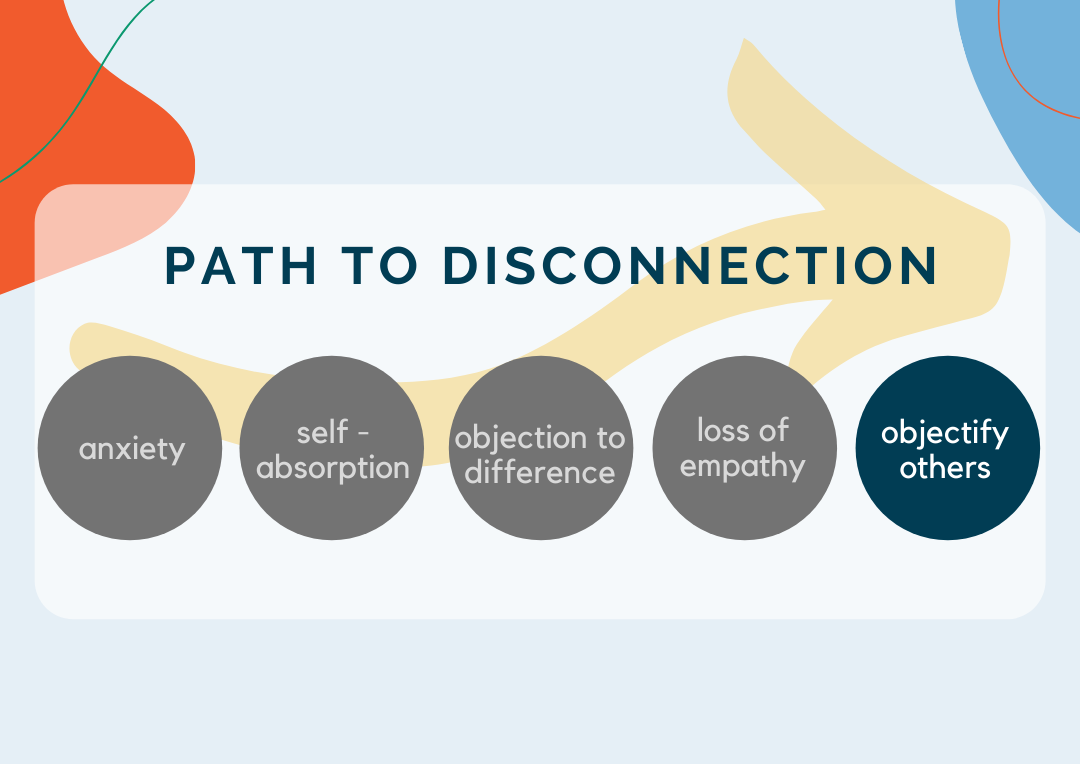Things have felt pretty polarized lately. Ironically, that’s the one thing we all seem to agree on. But few things have stirred as much controversy, anxiety, and outright vitriol as our varying opinions about the Covid-19 vaccines. At a time when polarization could literally be a matter of life and death, we need to find a way to get past our differences and have the kind of conversations that bring us together, no matter how differently we may feel about the vaccines themselves.
The skills of Safe Conversations can help us talk to each other in ways that don’t trigger emotions that fuel fear and anger. Let’s look at a few simple, compassionate steps we can take to have conversations that connect rather than alienate the ones we love and care about.
- Be conscious of your body language. Whether we’re conscious of it or not, every conversation begins with body language before a single word is uttered. Your breathing, posture, and eye contact all tell the other person whether the conversation is likely to be either safe or threatening. To ensure they sense safety, start by taking a few mindful breaths and getting yourself centered. Soften your eyes to a friendly, relaxed gaze rather than a stressful, assertive glare. Maintain appropriate personal space so your loved one doesn’t feel trapped or cornered.
- Ask if it’s a good time to talk about vaccines. Next, begin speaking by asking to have the conversation, and asking when would be a good time to do that. This might look like, “Hey, this whole vaccination thing has been on my mind a lot, and I’d like to have a conversation with you about it. Is now a good time for us to talk or is there a good time later? ”Be straight-up about the topic; being vague feels “sneaky” and can put your loved one in a negative state of mind. Asking if now is a good time is simply a way of honoring their boundaries. This way, it shows you are making the conversation a priority and want to listen to what they have to say, at a time when you can both give the conversation your full attention.
- Listen to understand, not to refute. It’s not your job to persuade anyone. Convincing and persuading are attempts to get someone to change their mind to fit what YOU think they should believe, think, or feel. That’s not really our place in most cases. We all have the right to our own worldview, based on our own, unique life experiences that are valid and real for each individual. The objective is to HEAR them, accept them as a valid human being – different opinions and all – and connect with them beyond those differences. You do not have to agree with them, but if you can accept them as they are without insisting they change, you have a greater likelihood of connecting and of their listening to your point of view. If they still don’t want to get vaccinated, then you have choices to make about how you’ll be around them. That is the extent of your rights and responsibility.
- Learn where their opinions are coming from, and validate their concerns. By being curious to learn about them rather than judging them for their different opinion, you begin to understand why their stance makes sense to them. This simple, caring act of hearing them out can make your friend or loved one feel heard and respected and goes a long way toward forging the connection that may bring about the resolution you want. Once you’ve learned what life experiences have informed their opinion, you can validate their experience, even if it’s different from your own. You might say “Wow, now that I realize WHY you’ve been so hesitant to get the shot, it makes sense that you might feel that way. If I’d had that experience, I may have been reluctant, too.” Now that you’ve validated their experiences, you can empathize with the feelings those experiences created. For example, “Given all you’ve told me, I imagine you may even feel a bit angry or maybe scared about the effects of the vaccine, is that kind of how you feel? Or are there other feelings you’re having about it?” See if you can imagine what else they may be feeling, given their own unique experience. Be as open to seeing them as you want them to be about seeing you. Let them know you accept that their feelings are real and valid, even if you don’t agree with their opinions.
- Ask before sharing your own opinion. Before sharing your own opinion, ensure they feel completely heard by asking if there’s anything more they’d like to share. Give them a chance to say what they need to say. When it’s evident they feel heard, ask if it is okay for you to share with them. This could sound like, “I really appreciate you sharing all this with me, it helps me see things in a whole new light. Now that I understand better why you feel as you do about vaccines, would it be ok if I share my thoughts about it with you?” After you’ve listened to them, validated their experiences, and treated them with empathy, they are much more likely to do the same for you and give you the same respect. If they agree to hear you, calmly share your opinion and your reasons for feeling that way.
- Be open to a compromise. If you are discussing vaccinations in advance of a specific event or situation and they still feel strongly about not getting vaccinated, see if you can reach a healthy compromise that validates both groups. For example, wearing masks or hosting the event virtually. However, whenever making a compromise, it’s critical to make sure both parties feel heard and supported.
- Be prepared to choose what’s best for you and your family. Ultimately, you can’t control other people’s decisions. Remember, the point is not necessarily to arrive at an agreement. It’s ok to not agree, and you can feel connected even if you don’t. The point is to connect beyond your differences, which you attempted to do by listening without judgment and talking without criticism. Once you do that, the decisions you make and the actions you take on behalf of your family are clear and unthreatening to the other person because you have heard and understand each other.
written by Safe Conversations Trainer, Keva Ward
Recommended Reading



